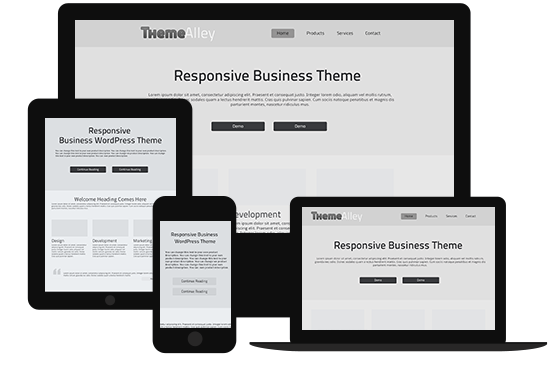In-Depth Analysis of Healthcare Regulations in the UK
Unlocking the Essentials of NHS Funding Structures and Compliance

Navigating the intricate landscape of healthcare in the United Kingdom necessitates a comprehensive understanding of the NHS funding model along with its rigorous compliance requirements. The NHS, primarily financed through taxation, is a cornerstone of the UK’s healthcare system. All service providers, regardless of being public or private entities, must comply with stringent regulations to guarantee the appropriate allocation and utilisation of funds. Each healthcare service is expected to exhibit accountability, transparency, and efficient resource management to effectively meet the health needs of the population. Mastering these fundamentals is crucial not only for operational success but also for upholding the integrity of the healthcare framework.
A profound comprehension of the complexities of NHS funding is essential for all healthcare providers. The availability of financial resources can significantly influence service delivery, impacting various aspects from workforce levels to the spectrum of treatments available to patients. Adhering to NHS financial regulations is not only critical for safeguarding a provider’s reputation but also for enhancing patient trust and ensuring their safety. Thus, it becomes imperative for healthcare providers to establish robust financial governance frameworks that meticulously oversee expenditures and ensure alignment with NHS directives. Conducting regular audits and compliance checks is a vital part of this process, enabling the identification and prompt rectification of discrepancies, which ultimately reinforces financial integrity within the healthcare sector.
The importance of achieving compliance cannot be overemphasised. Non-compliance can lead to dire consequences, including substantial financial penalties, loss of service contracts, and reputational damage, all of which can be detrimental in an industry where public trust is paramount. Therefore, stakeholders within healthcare organisations must cultivate a culture of compliance, where every employee is acutely aware of their role in managing resources effectively and ethically.
Understanding Care Quality Commission Standards and Their Significance
The Care Quality Commission (CQC) plays a pivotal role in ensuring that healthcare services throughout the UK adhere to essential quality and safety standards. The guidelines established by the CQC cover a wide range of healthcare provisions, including financial compliance. The unwavering commitment of the CQC to safeguard patients and promote high-quality care is vital for maintaining public confidence in health services, which in turn enhances the overall patient experience.
Healthcare providers are required to conduct continuous assessments of their compliance with CQC standards, which encompass not only the quality of patient care but also sound financial management practices. These comprehensive guidelines require providers to effectively demonstrate how they utilise resources, ensuring that finances contribute to the delivery of safe and effective care. Compliance with CQC standards not only helps avoid potential penalties but also boosts the operational efficiency of healthcare services, fostering a culture of excellence across the board.
To maintain ongoing CQC compliance, organisations should implement thorough internal auditing and review processes to scrutinise financial practices against established benchmarks. This proactive approach fosters continuous improvement and allows for the early identification of areas requiring attention before they evolve into compliance issues. Furthermore, regular staff training on CQC requirements can significantly fortify the workforce’s commitment to uphold financial standards and integrity.
The CQC’s emphasis on transparency also necessitates that healthcare providers deliver clear financial reporting. Stakeholders, inclusive of patients, must have access to comprehensive information detailing how funds are allocated and utilised. This level of openness fosters trust and accountability within the healthcare system, ultimately benefiting both patients and providers, while also enhancing the credibility of healthcare institutions.
Impact of Regulatory Bodies on Financial Compliance in Healthcare
In the UK, numerous regulatory bodies, such as the General Medical Council (GMC) and the Nursing and Midwifery Council (NMC), significantly influence financial compliance within healthcare settings. These institutions establish professional standards and ethical guidelines that healthcare practitioners are obliged to adhere to, thus indirectly shaping financial practices across various healthcare environments. Achieving compliance with these standards is crucial for ensuring the ethical management of financial resources.
For example, the GMC oversees the medical profession, ensuring that doctors are fit to practice and providing guidance on ethical financial behaviours. By enforcing these standards, the GMC plays a vital role in fostering a culture of accountability and integrity among healthcare professionals. Similarly, the NMC regulates the practices of nurses and midwives, ensuring that financial dealings within nursing contexts comply with established ethical benchmarks, thus safeguarding patient welfare.
Healthcare providers must remain vigilant and informed about these regulatory requirements to align their financial practices with the professional standards set forth by these governing bodies. This alignment is essential for fostering trust between healthcare professionals and the organisations they represent. Non-compliance can result in disciplinary actions, which may carry severe financial repercussions for the healthcare provider, jeopardising their operational viability.
Moreover, the influence of these regulatory bodies extends beyond mere compliance; they are instrumental in shaping organisational culture, promoting ethical financial practices that ultimately benefit both patients and providers. By ensuring that practitioners are well-versed in their financial responsibilities, healthcare organisations can mitigate risks associated with non-compliance, thereby enhancing their overall financial health and sustainability within the competitive healthcare landscape.
Navigating Private Healthcare Regulations for Compliance

Private healthcare in the UK operates under a distinct regulatory framework that is imperative for ensuring financial compliance and accountability. While the NHS governs public healthcare, private providers are obligated to adhere to specific regulations delineated by the Care Quality Commission and various industry-specific bodies. This regulatory atmosphere is designed to protect patient interests while ensuring that private healthcare providers function transparently and ethically, thus maintaining elevated standards of care.
A primary focus of private healthcare regulations is the requirement for transparent financial practices. Private providers must comply with stringent accounting standards, ensuring the accurate maintenance of records concerning income and expenditures. Transparency in billing is of utmost importance, as patients must fully comprehend the costs associated with their care. Failing to provide clear and concise billing information may lead to disputes and potential legal challenges, significantly impacting a provider’s financial stability and reputation.
Additionally, private healthcare providers are subject to regular inspections by regulatory agencies to ensure compliance with established guidelines. These inspections evaluate not only the quality of care rendered but also scrutinise the financial practices of the organisation. Providers that fail to meet compliance standards risk incurring penalties and losing their licensure, a situation that can be financially catastrophic and detrimental to their operational capacity.
In today’s highly competitive landscape, maintaining compliance in private healthcare transcends mere regulatory obligation; it is a fundamental business strategy. Providers that prioritise financial compliance are better positioned to bolster their reputation, attract a larger patient demographic, and ultimately achieve improved financial outcomes. This unwavering commitment to compliance fosters trust with patients, encouraging them to engage confidently with the services offered.
Emphasising Data Protection and Patient Confidentiality in Financial Compliance
Data protection and patient confidentiality hold paramount importance in the UK healthcare sector, particularly regarding financial compliance. The UK General Data Protection Regulation (GDPR) imposes stringent guidelines on how healthcare providers must manage patient data, including financial information. Adhering to these regulations is essential for safeguarding patient information and ensuring ongoing trust in healthcare services.
Healthcare organisations must establish robust data protection policies that govern the collection, storage, and processing of patient data. This includes ensuring that financial records are secure and accessible solely to authorised personnel. Breaches of data protection laws can lead to severe financial penalties and irreparable damage to a provider’s reputation, making compliance an indispensable component of healthcare management.
Furthermore, training staff on data protection principles is crucial for maintaining compliance. Employees must understand the significance of patient confidentiality and the legal implications of failing to uphold these standards. Regular training sessions and updates on data protection regulations empower staff to handle sensitive financial information responsibly and ethically, reinforcing the organisation’s dedication to compliance.
Incorporating advanced technological solutions can considerably enhance compliance with data protection regulations. Secure electronic health record systems can assist healthcare providers in managing patient data more effectively, ensuring that all financial transactions comply with data protection laws. By prioritising data security, healthcare organisations not only protect their patients but also safeguard their financial interests while building a trustworthy reputation in the healthcare community.
Developing Effective Compliance Programs for Healthcare
Creating a Customised Compliance Framework for Financial Regulations

Developing a robust compliance framework tailored to the financial regulations governing UK healthcare is essential for maintaining organisational integrity and ensuring adherence to legal standards. A well-structured compliance programme serves as the backbone of any healthcare organisation, guiding staff in their daily operations and decision-making processes. This framework should encompass specific policies, procedures, and controls designed to mitigate risks associated with financial management in healthcare environments.
The initial step in designing an effective compliance framework involves conducting a thorough assessment of current practices and identifying potential compliance gaps. This assessment should include a review of existing financial policies, an analysis of past compliance issues, and a comprehension of applicable regulations. By pinpointing specific areas that require enhancement, organisations can develop targeted initiatives to improve compliance and protect their operational viability.
An effective compliance framework must delineate clear roles and responsibilities for staff members involved in financial management. Establishing this clarity ensures accountability and promotes a culture of compliance within the organisation, where everyone understands their role in upholding ethical financial practices. Regular training sessions should be implemented to keep employees informed about the latest regulations and organisational policies, ensuring that everyone understands their responsibilities in maintaining compliance.
Monitoring and auditing are critical components of a successful compliance framework. Regular internal audits can help identify discrepancies and areas for improvement, ensuring that financial practices align with regulatory requirements. These audits must be documented meticulously to provide a clear record of compliance efforts and demonstrate a commitment to maintaining the highest standards of financial integrity within the organisation.
Having a responsive mechanism for addressing compliance issues is equally important. Establishing a clear process for reporting and investigating potential compliance breaches allows organisations to act swiftly, mitigating risks and preventing further issues. A transparent approach to compliance not only protects the organisation but also enhances its reputation among patients and stakeholders, fostering trust and reliability.
Continuous Training and Education for Compliance Success
Ongoing training and education for staff members form the cornerstone of a successful compliance programme. In the ever-evolving landscape of UK healthcare regulations, keeping staff informed about financial compliance standards is crucial for ensuring adherence to best practices. A well-trained workforce is better equipped to navigate the complexities of financial management and compliance, contributing to the overall integrity of the organisation and its operations.
Training should encompass a comprehensive range of topics, including an overview of relevant regulations, ethical billing practices, data protection principles, and the significance of financial transparency. By providing thorough education, healthcare organisations empower their employees to grasp the critical importance of compliance in their daily roles. This understanding fosters a culture of accountability and encourages staff members to take ownership of their financial responsibilities and ethical obligations.
Implementing regular training sessions can help reinforce compliance knowledge and keep staff updated on any changes in regulations. These sessions can include workshops, webinars, and e-learning modules, ensuring accessibility for all employees. Moreover, incorporating real-world case studies and practical examples into training can enhance engagement and understanding, making the training experience more relatable and impactful.
Assessing and evaluating the effectiveness of training is also essential for a successful compliance programme. Regularly soliciting feedback from staff can help identify areas for improvement in the training initiative. Adjusting content and delivery methods based on employee input creates a dynamic learning environment that adapts to the needs of the organisation and its workforce.
Additionally, promoting a culture of continuous learning encourages staff to stay informed about industry developments and emerging trends in financial compliance. Encouraging employees to pursue further education and professional development opportunities can enhance their expertise and contribute to the overall success of the organisation, ensuring that it remains compliant and competitive in the market.
Implementing Comprehensive Monitoring and Auditing Processes
Implementing thorough monitoring and auditing processes is crucial for ensuring continuous compliance within UK healthcare settings. Regular monitoring enables organisations to assess their financial practices against established standards, helping to identify potential compliance issues before they escalate. This proactive approach fosters financial integrity and reinforces accountability within the organisation, creating a culture of compliance and responsibility.
Developing a comprehensive audit plan is essential for effective monitoring. This plan should outline the scope of audits, their frequency, and the methodologies used to assess compliance. Internal audits should be conducted regularly, focusing on various aspects of financial management, including billing practices, expenditure tracking, and the accuracy of financial reporting. These audits serve as a valuable tool for identifying discrepancies and improving overall financial practices within the organisation.
Utilising technology can significantly enhance the efficiency of monitoring and auditing processes. Advanced software solutions can automate data collection and analysis, allowing for real-time monitoring of financial activities. This not only streamlines the auditing process but also enables organisations to respond swiftly to any anomalies or discrepancies, ensuring compliance and maintaining financial stability.
Additionally, establishing key performance indicators (KPIs) related to financial compliance can help organisations track their progress over time. By setting measurable goals, healthcare providers can assess the effectiveness of their compliance initiatives and identify areas that require further attention. Regularly reviewing performance against KPIs fosters a culture of accountability and continuous improvement within the organisation.
Documentation plays a crucial role in the auditing process. Maintaining detailed records of audits, findings, and corrective actions taken is essential for demonstrating compliance efforts to regulatory bodies. This documentation serves as evidence of the organisation’s commitment to upholding financial integrity and can enhance transparency with patients and stakeholders, ultimately fostering trust and credibility.
Engaging external auditors can also provide an objective perspective on compliance efforts. External audits can offer valuable insights and recommendations for improvement, helping organisations to refine their compliance frameworks and enhance overall financial management practices. Collaborating with external experts ensures that healthcare providers remain compliant and maintain high standards in their financial operations.
Strategically Managing Financial Risks in Healthcare
Identifying Financial Risks Across Healthcare Operations
Identifying potential financial risks is fundamental for healthcare providers in the UK. The healthcare sector is inherently fraught with financial challenges, including fluctuating funding, rising operational costs, and changing regulations. Understanding these risks allows organisations to develop targeted strategies to mitigate them effectively, ensuring financial stability and compliance with relevant regulations.
One of the primary risks facing healthcare providers is the uncertainty surrounding NHS funding. Changes in government policy can dramatically impact the financial landscape, leading to budget cuts or reallocations that affect service delivery. Providers must continuously monitor funding trends and adapt their financial strategies accordingly to minimise the impact of these fluctuations on their operations and patient care.
Operational risks also pose significant challenges. Healthcare organisations must manage rising costs associated with staffing, equipment, and technology. Inadequate financial management practices can lead to overspending and misallocation of resources, jeopardising the organisation’s financial health and its ability to deliver quality care. Conducting regular financial assessments can help identify areas where costs can be optimised, allowing for better resource allocation and management.
Regulatory risks represent another critical consideration. Non-compliance with financial regulations can lead to severe consequences, including fines, penalties, and reputational damage. Providers must stay informed about relevant regulations and develop robust compliance frameworks to effectively mitigate these risks. Regular training and education for staff can further enhance awareness and understanding of compliance obligations, thereby reducing the likelihood of regulatory breaches.
Market competition introduces additional financial risks. As private healthcare providers compete for patient attention, aggressive pricing strategies can lead to reduced profit margins. Conducting market analysis and developing competitive pricing strategies can help organisations maintain financial viability while attracting patients and ensuring access to necessary services.
Ultimately, a proactive approach to identifying financial risks is essential for healthcare providers. By regularly assessing the financial landscape and implementing strategies to mitigate potential challenges, organisations can safeguard their financial health while ensuring compliance with relevant regulations, ultimately benefiting patients and the healthcare system as a whole.
Implementing Effective Risk Mitigation Strategies
Developing effective strategies to mitigate financial risks is essential for ensuring compliance within the UK healthcare system. A proactive approach to risk management can protect healthcare organisations from financial instability while enhancing their ability to deliver quality care and services to patients.
A cornerstone strategy for mitigating financial risks is the establishment of a comprehensive financial management plan. This plan should encompass budgeting, forecasting, and financial reporting processes designed to closely monitor expenditures and income. By maintaining a clear overview of financial performance, organisations can quickly identify any discrepancies and take corrective action as needed, minimising the impact of financial challenges.
Implementing robust internal controls is also crucial for minimising financial risks. These controls should include clear policies and procedures for financial transactions, ensuring that all expenditures are appropriately authorised and documented. Strong internal controls reduce the likelihood of fraud and financial mismanagement, safeguarding the organisation’s assets and ensuring compliance with relevant regulations.
Regular financial audits serve as an essential tool for identifying and addressing potential risks. Conducting both internal and external audits can provide valuable insights into financial practices, helping organisations to pinpoint areas needing improvement. By promptly addressing issues identified in audits, providers can strengthen their financial management practices and enhance compliance with regulatory standards.
Engaging with financial consultants can further bolster risk mitigation efforts. These professionals can provide expert guidance on financial management strategies, helping organisations navigate complex regulatory requirements and optimise their financial performance. Collaborating with financial experts ensures that healthcare providers stay ahead of emerging trends and developments in the financial landscape, thereby enhancing their operational resilience.
Additionally, establishing a culture of accountability within the organisation reinforces the significance of financial compliance. Encouraging staff at all levels to take ownership of their financial responsibilities fosters a collective commitment to maintaining compliance and safeguarding the organisation’s financial health. Through the implementation of these strategies, healthcare organisations can effectively mitigate financial risks and enhance their overall compliance posture.
Learning from Case Studies in Risk Management
Examining case studies of successful risk management and compliance in UK healthcare institutions provides valuable insights into best practices and effective strategies. Learning from the experiences of others enables organisations to adopt proven approaches to financial management and compliance, minimising potential risks and enhancing their operational capabilities.
A notable example is the financial turnaround of a prominent NHS trust that faced significant budgetary challenges. The trust implemented a comprehensive financial management programme that encompassed rigorous budgeting processes, regular audits, and enhanced financial reporting. By establishing clear performance metrics and accountability measures, the organisation successfully identified areas of overspending and improved its financial position, demonstrating the effectiveness of strategic financial management.
Another case study highlights a private healthcare provider that encountered compliance issues related to financial reporting. The organisation engaged with a compliance consultant to assess its financial practices and develop tailored solutions. Through the implementation of robust internal controls, regular training for staff, and enhanced transparency in financial communications, the provider successfully improved its compliance status and regained the trust of both patients and regulatory bodies, showcasing the importance of proactive compliance efforts.
Furthermore, a community healthcare organisation illustrated the significance of proactive risk identification and mitigation. By conducting regular financial assessments and engaging with key stakeholders, the organisation effectively identified potential risks related to funding uncertainties. This proactive approach allowed the organisation to implement strategies to diversify its funding sources, ensuring financial stability and compliance in the face of changing policies and regulations.
These case studies underscore the importance of adopting a proactive, strategic approach to risk management in healthcare. By learning from the successes and challenges faced by their peers, organisations can develop effective financial management practices that support compliance efforts while enhancing patient care and organisational sustainability.
Utilising Technology to Enhance Compliance
Harnessing Electronic Health Records to Improve Compliance
The integration of Electronic Health Records (EHR) systems within UK healthcare settings has revolutionised the management of patient data, including financial information. These systems facilitate streamlined documentation, enhance data accuracy, and improve compliance with financial regulations, thereby contributing to the overall integrity of healthcare organisations and their operational efficacy.
One of the primary benefits of EHRs is their ability to centralise patient information, including billing and financial records. This centralisation enables healthcare providers to maintain accurate and up-to-date financial data, which is essential for meeting compliance requirements. By automating data entry and reducing the likelihood of human error, EHR systems enhance data accuracy and ensure that financial transactions are documented systematically and securely.
Moreover, EHRs significantly facilitate financial compliance by streamlining billing processes. Automated billing features enable organisations to generate invoices promptly and accurately, significantly diminishing the likelihood of billing disputes and improving revenue cycles. Efficient billing practices are critical for maintaining financial viability and ensuring compliance with NHS guidelines, ultimately benefiting both providers and patients.
EHR systems also incorporate robust security features that protect sensitive patient data, including financial information. Compliance with data protection regulations, such as the UK GDPR, is a top priority for healthcare organisations. With EHRs offering sophisticated encryption and access controls, providers can safeguard patient confidentiality while ensuring compliance with legal requirements and maintaining trust in their services.
Furthermore, EHR systems can facilitate regular audits and monitoring of financial practices. By providing easy access to financial records and transaction histories, these systems enable organisations to conduct internal audits efficiently. This proactive monitoring helps identify potential compliance issues early on, allowing organisations to address them promptly and effectively, thus reinforcing their commitment to compliance and delivering quality care.
Ultimately, the adoption of EHR systems enhances compliance efforts in UK healthcare settings. By improving data accuracy, streamlining billing processes, and safeguarding patient information, these systems contribute to the financial integrity of healthcare organisations while ensuring compliance with regulatory requirements, thereby facilitating the delivery of safe and effective patient care.
Leveraging Compliance Software for Efficient Financial Management
The rise of compliance software solutions has transformed financial compliance management within the UK healthcare sector. These specialised tools offer comprehensive features designed to streamline compliance processes, enhance data accuracy, and improve overall financial management practices, thereby facilitating adherence to regulatory requirements.
One of the primary advantages of compliance software is its ability to automate various financial management tasks. By automating processes such as billing, reporting, and auditing, healthcare organisations can significantly reduce the administrative burden on staff while minimising the risk of human error. This automation not only enhances efficiency but also improves the accuracy of financial records, contributing to compliance efforts and overall organisational effectiveness.
Compliance software solutions often include features that enable organisations to track regulatory changes and ensure adherence to relevant laws. This capability is particularly beneficial in a dynamic regulatory environment like healthcare, where compliance requirements can evolve rapidly. By staying informed about regulatory changes, organisations can adapt their practices accordingly and maintain compliance, thus safeguarding their financial interests.
Additionally, these software solutions typically offer robust reporting capabilities, allowing organisations to generate detailed financial reports and dashboards. This transparency is crucial for monitoring compliance and identifying potential issues. Comprehensive reporting enables healthcare providers to assess their financial performance effectively and ensure that they are meeting regulatory requirements, thereby enhancing operational efficiency and compliance.
Moreover, many compliance software solutions include built-in training modules that educate staff on financial compliance standards and best practices. By providing ongoing training resources, these tools empower employees to stay informed about their responsibilities and enhance their commitment to compliance, fostering a culture of accountability within the organisation.
The integration of compliance software into financial management processes can significantly enhance the overall compliance posture of healthcare organisations. By streamlining workflows, improving data accuracy, and providing valuable insights, these tools support effective compliance management within the complex landscape of UK healthcare, ultimately benefiting both providers and patients alike.
Addressing Data Security and Privacy Issues in Healthcare
Data security and privacy concerns are paramount in the realm of financial compliance within UK healthcare. With the increasing reliance on digital systems for managing patient information, including financial data, organisations must prioritise robust security measures to protect sensitive information from breaches and unauthorised access.
Healthcare organisations must implement comprehensive data security policies that encompass all aspects of financial data management. This includes employing strong encryption protocols, access controls, and secure data storage systems. By ensuring that only authorised personnel have access to sensitive financial information, organisations can mitigate the risk of data breaches and maintain compliance with data protection regulations, thereby safeguarding their reputation and financial integrity.
Regular staff training on data security best practices is also essential. Employees must be educated about the importance of safeguarding patient confidentiality and the legal implications of failing to protect sensitive data. By fostering a culture of security awareness, healthcare organisations can empower their staff to take proactive steps in protecting financial information and complying with regulatory standards.
Furthermore, utilising advanced technology solutions can bolster data security and privacy efforts. Implementing multi-factor authentication, secure cloud storage, and regular system updates can significantly reduce the risk of cyberattacks and data breaches. Investing in cybersecurity measures not only protects patient information but also ensures compliance with the UK GDPR and other relevant regulations, thereby enhancing public trust in healthcare services.
Monitoring and auditing data security practices are critical for maintaining compliance. Regular assessments of security protocols can help identify vulnerabilities and areas needing improvement. By conducting routine audits of access logs and data management practices, organisations can ensure that they are adhering to best practices and protecting sensitive financial information, ultimately supporting compliance and accountability.
In an era where data breaches can have dire consequences for healthcare providers, prioritising data security and privacy is essential for maintaining financial compliance. By implementing robust security measures and fostering a culture of awareness, organisations can safeguard patient data while ensuring compliance with regulatory requirements, thereby enhancing their operational effectiveness and patient trust.
Navigating NHS Reimbursement: Strategies for Optimising Financial Success
Decoding NHS Tariffs and Payment Structures for Healthcare Providers
Navigating NHS tariffs and payment systems is crucial for healthcare providers seeking to ensure financial compliance in the UK. NHS tariffs are the set prices for services provided to patients, and understanding these financial frameworks is essential for accurate billing and reimbursement processes. This knowledge is vital for maintaining compliance and achieving financial stability.
NHS tariffs are established based on various factors, including the type of service provided, patient complexity, and regional variations. Providers must be familiar with the specific tariffs relevant to their services to accurately bill for care delivered. This understanding is essential to maintain compliance, as incorrect billing can lead to financial discrepancies and potential penalties, undermining the financial health of the organisation.
Healthcare providers should regularly review and update their understanding of NHS tariffs to respond effectively to any changes in funding structures. This ongoing education ensures that organisations can accurately navigate reimbursement processes and optimise their financial performance, thereby enhancing operational efficiency and patient care delivery.
Moreover, understanding NHS payment systems is essential for ensuring timely reimbursement. Providers must be aware of the steps involved in submitting claims and the timelines associated with payment processes. Familiarity with these systems allows organisations to streamline their billing practices, minimising delays in reimbursement and ensuring continued financial stability and operational viability.
Effective communication with NHS commissioners is also vital for navigating reimbursement systems. Establishing strong relationships with commissioners can enhance understanding of funding structures and provide insights into potential changes that may impact providers. This collaboration fosters transparency and ensures that providers are well-informed about their financial entitlements, ultimately benefiting the organisation’s financial health.
By prioritising a comprehensive understanding of NHS tariffs and payment systems, healthcare providers can enhance their compliance with financial regulations while optimising their reimbursement processes. This knowledge ultimately contributes to the financial health of the organisation and enables effective service delivery, ensuring that patients receive the care they need.
Streamlining Claims Submission for Efficient Reimbursement
Submitting claims for reimbursement within NHS guidelines is a critical aspect of financial compliance for healthcare providers. The accuracy and timeliness of claims submission directly impact an organisation’s financial stability and operational efficiency, making it essential for providers to adhere to established protocols.
To ensure successful claims submission, healthcare providers must meticulously follow the guidelines set forth by NHS commissioners. This includes understanding the required documentation, coding requirements, and submission timelines. Compliance with these guidelines is essential for minimising delays in payment and avoiding potential penalties associated with incorrect submissions, thereby safeguarding the organisation’s financial interests.
Implementing a systematic approach to claims submission is crucial for enhancing efficiency. Organisations should establish standard operating procedures that outline the steps involved in preparing and submitting claims. This may include verifying patient eligibility, ensuring accurate coding, and conducting pre-submission audits to identify potential discrepancies. Such measures help to streamline the claims process and enhance compliance.
Moreover, investing in technology solutions can significantly streamline the claims process. Electronic claims management systems can automate many aspects of claims submission, reducing administrative workload and minimising errors. These systems can also provide real-time tracking of claims, allowing organisations to monitor the status of submissions and address any issues promptly, thus improving operational efficiency and financial outcomes.
Regular training for staff involved in claims submission is essential for maintaining compliance. Employees must be educated about NHS guidelines and the importance of accurate billing practices. Providing ongoing training opportunities ensures that staff members are equipped with the knowledge needed to navigate the complexities of claims submission and uphold compliance standards.
By prioritising accuracy and efficiency in the claims submission process, healthcare providers can optimise their reimbursement practices while ensuring compliance with NHS guidelines. This focus on effective claims management ultimately contributes to the financial viability of the organisation and enhances its ability to deliver quality care to patients.
Effectively Managing Appeals and Dispute Resolution Processes
Navigating appeals and dispute resolution processes related to NHS reimbursements is a critical aspect of financial compliance for healthcare providers. Disputes can arise for various reasons, including denied claims, discrepancies in billing, or misunderstandings regarding service delivery. Understanding the appeals process is essential for organisations to protect their financial interests and ensure compliance.
The first step in addressing disputes is to thoroughly review the reasons for claim denials or discrepancies. Providers should conduct a detailed analysis of the claim in question, identifying any errors or omissions that may have contributed to the issue. This analysis is crucial for preparing a robust appeal and ensuring that the organisation can effectively advocate for its position during the dispute resolution process.
Once potential issues are identified, healthcare providers should follow the established NHS appeals process. This typically involves submitting a formal appeal to the relevant NHS commissioner, accompanied by supporting documentation that substantiates the claim. Clear and concise communication is vital during this process to ensure that the appeal is understood and considered appropriately, thus enhancing the likelihood of a positive outcome.
In some instances, disputes may escalate to formal mediation or legal proceedings. In these situations, engaging legal counsel experienced in healthcare reimbursement matters can provide invaluable guidance. Legal experts can assist organisations in navigating complex regulations and advocating for their financial interests effectively, ensuring that the organisation is well-represented throughout the dispute resolution process.
Establishing a proactive approach to dispute resolution can greatly enhance an organisation’s ability to manage appeals successfully. This includes maintaining detailed records of claims submissions, communications with NHS commissioners, and any relevant documentation. By keeping thorough records, providers can streamline the appeals process and demonstrate their commitment to compliance and accountability.
Ultimately, successfully navigating appeals and dispute resolution processes is integral to maintaining financial compliance within the UK healthcare system. By adopting a proactive and systematic approach to managing disputes, healthcare providers can safeguard their financial interests while ensuring the continued delivery of quality care to patients.
Monitoring and Auditing Reimbursement Processes for Financial Compliance
Regular monitoring and auditing of NHS reimbursement processes are vital for ensuring compliance and optimising financial performance in healthcare organisations. These practices help identify discrepancies, assess adherence to regulatory requirements, and enhance overall financial management, thereby contributing to the sustainability of healthcare providers.
Establishing a comprehensive auditing framework is essential for effective monitoring. This framework should include regular reviews of claims submissions, reimbursement rates, and billing practices. By conducting audits on a scheduled basis, organisations can identify potential compliance issues before they escalate and implement corrective actions as needed, thereby safeguarding their financial health.
Utilising data analytics can significantly enhance the monitoring process. By analysing trends and patterns in claims submissions and reimbursements, organisations can identify anomalies that may indicate compliance issues. Data-driven insights can inform decision-making and support proactive corrective actions, ensuring that organisations remain compliant and financially viable.
Engaging external auditors can also provide an objective assessment of reimbursement processes. External audits offer a fresh perspective, assessing compliance with NHS guidelines and identifying areas for improvement. This independent review can help strengthen the organisation’s financial practices and enhance overall compliance efforts, fostering trust and reliability among patients and stakeholders.
Moreover, staff training on monitoring and auditing procedures is essential for maintaining compliance. Employees involved in financial management must understand the importance of accurate documentation and adherence to established processes. Ongoing training ensures that staff members are equipped to identify potential compliance issues and take appropriate action, thus reinforcing the organisation’s commitment to compliance and quality care.
By prioritising regular monitoring and auditing of NHS reimbursement processes, healthcare organisations can enhance their financial management practices while ensuring compliance with regulatory requirements. This proactive approach ultimately contributes to the financial health of the organisation and its ability to deliver quality care to patients.
Promoting Ethical Billing Practices in Healthcare
Strategies for Preventing Fraud and Abuse in Healthcare Billing
Preventing fraud and abuse within the UK healthcare system is paramount for ensuring ethical billing practices and maintaining financial compliance. The repercussions of fraudulent billing can be severe, leading to financial penalties, legal consequences, and damage to an organisation’s reputation. Therefore, implementing robust measures to combat fraud and abuse is essential for healthcare providers committed to ethical practices.
One of the most effective strategies for preventing fraud is establishing a strong compliance culture within the organisation. This culture should emphasise ethical behaviour, transparency, and accountability among staff members. By fostering an environment where employees feel empowered to report suspicious activities, organisations can mitigate the risk of fraudulent practices and protect their financial integrity.
Implementing comprehensive internal controls is another critical component of fraud prevention. Healthcare providers must establish clear policies and procedures for financial transactions, ensuring that all billing practices adhere to established guidelines. Regular audits can help identify discrepancies and potential fraudulent activities, allowing organisations to respond swiftly and effectively, thus reinforcing their commitment to compliance and ethical practices.
Training staff on the importance of ethical billing practices is crucial. Employees must comprehend the legal implications of fraudulent billing and the potential consequences for both the organisation and patients. Regular training sessions can reinforce the importance of compliance and provide staff with the tools needed to identify and report fraudulent behaviour, thereby promoting a culture of accountability and integrity.
Utilising advanced technology solutions can also enhance fraud prevention efforts. By implementing data analytics tools, organisations can monitor billing patterns and identify anomalies that may indicate fraud. These tools can provide valuable insights into billing practices, enabling organisations to take proactive measures to address potential issues and maintain compliance.
Ultimately, preventing fraud and abuse in the UK healthcare system is essential for ensuring ethical billing practices and maintaining financial compliance. By establishing a strong compliance culture, implementing robust internal controls, and utilising technology solutions, healthcare organisations can safeguard their financial integrity while delivering quality care to patients and complying with regulatory requirements.
Establishing Transparent Billing Procedures
Implementing transparent billing procedures is essential for maintaining trust and compliance within UK healthcare. Transparent billing not only enhances patient satisfaction but also ensures adherence to financial regulations. By providing clear and accessible information about costs, healthcare providers can foster a culture of transparency that benefits both patients and the organisation.
One of the primary components of transparent billing is clear communication with patients regarding the costs of services. Healthcare providers should provide detailed estimates of treatment costs upfront, ensuring that patients are fully informed before receiving care. This transparency helps patients make informed decisions while reducing the likelihood of disputes related to billing and financial obligations.
Regular updates on billing procedures and changes in costs are also crucial for maintaining transparency. Healthcare providers should engage with patients through various communication channels, including websites, newsletters, and direct communications, to keep them informed about billing practices and any changes that may impact their financial responsibilities.
Another key aspect of transparent billing is the accuracy of billing statements. Healthcare providers must ensure that all charges are accurately reflected in the billing statement, with clear explanations for each item. This level of detail helps patients understand the costs associated with their care while minimising confusion and potential disputes, ultimately enhancing patient satisfaction and trust.
Moreover, providing accessible support for patients who have questions or concerns about their bills is essential for fostering transparency. Establishing a dedicated customer service team to address billing inquiries can enhance the patient experience and demonstrate a commitment to ethical billing practices, ensuring that patients feel valued and understood.
By prioritising transparency in billing procedures, healthcare providers can build trust with patients and enhance their compliance with financial regulations. This commitment to openness ultimately contributes to the financial health of the organisation and supports the delivery of quality care, reinforcing the organisation’s reputation within the healthcare community.
Implementing Patient Financial Assistance Programs
Exploring patient financial assistance programmes available in the UK is crucial for supporting ethical billing practices and ensuring that patients have access to necessary care. These programmes play a vital role in alleviating the financial burden on patients, promoting compliance with healthcare regulations, and fostering trust within the healthcare system.
Patient financial assistance programmes can take various forms, including sliding scale fees, payment plans, and grants to help cover medical expenses. By offering flexible payment options, healthcare providers can accommodate the diverse financial situations of their patients, ensuring that cost does not become a barrier to care and treatment.
Raising awareness about available financial assistance programmes is essential for ensuring that patients can access these resources. Healthcare organisations should actively promote these programmes through various channels, including websites, brochures, and direct communications with patients. Providing clear information about eligibility criteria and application processes can empower patients to seek assistance when needed, ultimately enhancing their access to care.
Additionally, training staff to recognise patients who may benefit from financial assistance programmes is crucial. Frontline staff, including receptionists and nurses, should be equipped to assess patients’ financial situations and guide them toward available resources. This proactive approach demonstrates a commitment to patient care and enhances the overall patient experience, fostering goodwill and trust.
Monitoring the effectiveness of financial assistance programmes is also essential for ensuring compliance and optimising outcomes. Healthcare providers should assess the impact of these programmes on patient access to care and overall financial health. Regular evaluations can help identify areas for improvement and ensure that programmes continue to meet the needs of patients effectively.
By exploring and promoting patient financial assistance programmes, healthcare providers can uphold ethical billing practices while ensuring that patients receive the care they need. This commitment to supporting patients financially ultimately contributes to the overall integrity of the healthcare system and reinforces the principles of accessibility and equity in healthcare delivery.
Collaborating with Legal and Financial Experts for Enhanced Compliance
Engaging Compliance Consultants for Expert Guidance
Engaging compliance consultants who specialise in UK healthcare financial regulations can significantly enhance an organisation’s ability to navigate the complexities of financial compliance. These experts bring a wealth of knowledge and experience to the table, providing invaluable insights and strategies for ensuring adherence to regulatory requirements and best practices.
One of the primary benefits of collaborating with compliance consultants is their capacity to conduct comprehensive assessments of existing financial practices. These assessments can help identify gaps in compliance and highlight areas needing improvement. By leveraging the expertise of consultants, healthcare organisations can develop tailored compliance programmes that align with regulatory standards and operational needs.
Compliance consultants can also offer guidance on best practices for financial management. They assist organisations in developing robust internal controls, establishing effective auditing processes, and implementing training programmes for staff. This expert guidance enhances the overall compliance posture of the organisation, minimising the risk of non-compliance and ensuring the sustainability of healthcare operations.
Moreover, engaging compliance consultants facilitates a proactive approach to addressing emerging regulatory changes. These experts stay abreast of evolving laws and regulations, ensuring that healthcare organisations are well-informed about their obligations. By keeping organisations updated on regulatory developments, compliance consultants help providers adapt their practices accordingly, thereby reinforcing their commitment to compliance and quality care.
Additionally, consultants can assist in the development of effective reporting and monitoring systems. By implementing robust data analytics tools, organisations can enhance their ability to track financial compliance and identify potential issues. This proactive monitoring ensures that organisations can address compliance challenges swiftly and effectively, ultimately safeguarding their financial interests.
Ultimately, collaborating with compliance consultants enhances the financial compliance efforts of healthcare organisations. By leveraging their expertise, organisations can navigate the complexities of regulatory requirements, ensure adherence to best practices, and optimise their financial management processes, thereby supporting quality patient care and organisational sustainability.
Securing Legal Support for Navigating Compliance Issues
Securing legal support to navigate complex compliance issues within the UK healthcare sector is essential for ensuring adherence to financial regulations. Legal experts with a focus on healthcare compliance can provide invaluable guidance, helping organisations mitigate risks and protect their financial interests effectively.
The complexities of healthcare regulations can pose significant challenges for providers, particularly regarding billing practices, reimbursement, and data protection. Engaging legal counsel experienced in these matters can help organisations understand their obligations and develop strategies for compliance, thereby reducing the risk of non-compliance and associated penalties.
Legal support is especially critical when addressing disputes with regulatory bodies or navigating appeals related to reimbursement. Experienced legal professionals can advocate for organisations, ensuring that their interests are protected and that they are treated fairly throughout the process. This advocacy can be crucial for safeguarding financial resources and maintaining compliance with relevant regulations.
Furthermore, legal experts can assist organisations in crafting comprehensive compliance policies and procedures. By providing guidance on best practices and regulatory requirements, legal counsel helps organisations establish robust frameworks that promote adherence to financial compliance standards and ethical practices.
Regular training on legal compliance matters is also essential. Engaging legal professionals to provide training sessions for staff ensures that employees are well-informed about their responsibilities and the potential legal implications of non-compliance. This education fosters a culture of accountability and enhances the organisation’s overall compliance efforts, ultimately benefiting patient care and operational integrity.
Ultimately, securing legal support is a vital component of financial compliance within the UK healthcare sector. By collaborating with legal experts, healthcare organisations can navigate the complexities of regulatory requirements, safeguard their financial interests, and ensure adherence to best practices, thereby reinforcing their commitment to quality care and ethical standards.
Strategic Financial Planning and Budgeting for Compliance
Effective financial planning and budgeting strategies are crucial for ensuring compliance within the UK healthcare system. Healthcare providers must develop comprehensive financial plans that align with regulatory requirements while optimising resource allocation and operational efficiency across their organisations.
The foundation of successful financial planning lies in accurate forecasting. Healthcare organisations should conduct thorough assessments of their financial performance, analysing historical data and identifying trends that can inform future budgeting decisions. By leveraging data-driven insights, organisations can make informed decisions about resource allocation and expenditure management, ultimately enhancing their financial stability and compliance posture.
Establishing clear budgeting processes is equally important. Healthcare providers should create detailed budgets that outline all anticipated revenues and expenses. This level of detail enhances transparency and allows organisations to track their financial performance against established benchmarks. Regularly comparing actual performance to budgeted figures helps identify discrepancies and areas needing adjustment, ensuring that financial practices remain compliant and effective.
Moreover, engaging stakeholders in the budgeting process is essential for fostering collaboration and accountability. Involving key personnel, including department heads and financial managers, ensures that budgeting decisions reflect the needs of various departments while aligning with organisational goals. This collaborative approach enhances buy-in from staff and promotes a culture of financial responsibility throughout the organisation.
Regular reviews of financial performance are crucial for maintaining compliance. Healthcare organisations should conduct periodic assessments of their budgets, evaluating their effectiveness and making necessary adjustments. This proactive approach ensures that organisations remain agile and responsive to changing financial circumstances, thereby enhancing their overall compliance and operational resilience.
Ultimately, effective financial planning and budgeting are integral to ensuring compliance within the UK healthcare system. By establishing robust processes and leveraging data-driven insights, healthcare organisations can optimise their financial performance while ensuring adherence to regulatory requirements, thereby supporting the delivery of quality care and enhancing patient outcomes.
Frequently Asked Questions About Healthcare Financial Compliance
What constitutes healthcare financial compliance?
Healthcare financial compliance refers to the adherence of healthcare organisations to laws, regulations, and standards governing financial practices, including billing, reimbursement, and data protection, ensuring ethical and transparent management of financial resources.
Why is compliance crucial in the healthcare sector?
Compliance is crucial in healthcare to ensure patient safety, maintain trust, avoid legal penalties, and optimise financial performance by adhering to regulations that govern billing, reimbursement, and data management.
How can healthcare organisations effectively prevent fraud?
Healthcare organisations can prevent fraud by establishing a strong compliance culture, implementing robust internal controls, conducting regular audits, and providing staff training on ethical billing practices and legal obligations.
What role do compliance consultants play in healthcare?
Compliance consultants provide expertise in financial regulations, help develop tailored compliance programmes, ensure adherence to best practices, and assist in navigating complex regulatory changes within healthcare organisations.
How can technology enhance financial compliance in healthcare?
Technology enhances financial compliance by automating processes, improving data accuracy, streamlining billing, and providing robust monitoring and reporting capabilities that support adherence to regulations.
What are NHS tariffs and their significance?
NHS tariffs are the fixed prices set by the NHS for specific healthcare services, determining how much providers are reimbursed for each service delivered, which is essential for maintaining compliance in billing practices.
How should healthcare providers effectively handle reimbursement disputes?
Healthcare providers should carefully analyse claim denials, follow established NHS appeals processes, maintain thorough documentation, and engage legal counsel if disputes escalate to ensure resolution and compliance with regulations.
What are patient financial assistance programmes?
Patient financial assistance programmes are resources offered by healthcare providers to help patients manage medical expenses, including sliding scale fees, payment plans, and grants, promoting access to necessary care and treatment.
What impact does data security have on financial compliance?
Data security is critical for financial compliance, as protecting sensitive patient information safeguards against breaches and ensures adherence to regulations like the UK GDPR, maintaining trust in healthcare services and protecting organisational integrity.
Why are transparent billing procedures important for healthcare providers?
Transparent billing procedures are vital for fostering trust with patients, ensuring clear communication regarding treatment costs, and enhancing compliance with financial regulations, ultimately improving the patient experience and organisational reputation.
The post Managing Healthcare Financial Compliance: Essential Strategies appeared first on Healthcare Marketing Service.




















